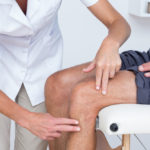When treating structural conditions, my first goal is the elimination of the patient’s pain; however, just getting the patient out of pain is not the end goal. The end goal is for the patient to be fully functional, long term. To achieve this, an integrated approach is absolutely necessary. I recommend the following steps when developing a personalized treatment plan for structural and non-structural issues:
- A Non-Invasive Comprehensive History & Examination
- Progressive Objective Testing
- An Individualized Structural Health Care Program
Treatment may include any or all the following strategies in various combinations:
- Chiropractic Care
- Functional Neurology
- Health Coaching
- Physical Therapy
- Massage Therapy
- Functional Exercise Therapy
- Physiologic Modalities
The goal of implementing these strategies is the reversal or elimination of problematic structural and functional conditions.
A Structural Case Study
A 44-year-old gentleman, who had knee surgery about three months earlier was still suffering from chronic knee issues. He went to physical therapy, had his normal strengthening and stretching routines, but appropriate proprioceptive rehab was never established for him. During this time the gentleman was wearing orthotic devices.
Orthotics are customized foot devices that slip into the shoe allowing the foot to function and transfer energy throughout the system. There is something called the kinetic chain, which starts at the base of the heel, or the back of the heel during heel strike and ends at the opposite base of the skull. That is why we “cross-crawl” or when we walk. It’s the way energy transfers through our bodies as we walk or run.
When an orthotic is necessary, it allows the individual to transfer that energy correctly, so there’s no abnormal stress on the joints as they walk, run or stand. This patient’s orthotics were never reassessed after the knee surgery. The first step was to bring him in, reassess him, rebuild orthotics and give him an appropriate rehabilitation protocol.
After evaluation and treatment he was pain free in just two weeks, with no additional complications from surgery. The moral of this story is to make certain you reset the neurological control around an injured area after surgery, and make sure it’s solidified through appropriate training and treatment.
by Dr. Thomas M. Mitchell, D.C., CCSP | Owner, Clinic Director Chicago Institute for Health and Wellness Copyright ©







Join the conversation